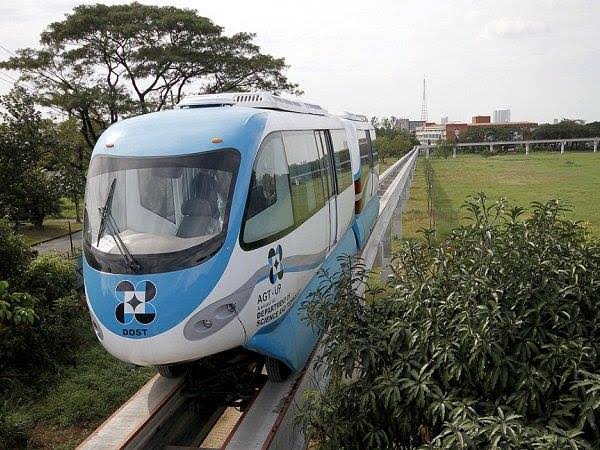The Philippine government, spearheaded by the Department of Science and Technology (DOST), has undertaken a groundbreaking initiative to address the challenges of heavy traffic and air pollution in Metro Manila through the development of a locally designed Automated Guideway Transit System (AGTS).
About Automated Guideway Transit System (AGTS)
Conceptualized as a cost-effective alternative to traditional monorail systems, the AGTS aims to enhance urban mobility and complement the existing Manila Metro Rail Transit System.
Collaborating closely with other DOST agencies such as the Philippine Council for Industry, Energy and Emerging Technology Research and Development (PCIEERD) and the Project Management and Engineering Design Services Office (PMEDSO), the project aims to showcase the viability and efficiency of AGT technology in the Philippine context.
In conclusion, the DOST's Automated Guideway Transit System stands as a testament to Philippine innovation and ingenuity, poised to redefine the urban landscape and enhance the lives of millions of commuters in Metro Manila and beyond.
Loading...
Under the umbrella of the DOST's High-Impact Technology Solutions (HITS) project, the Metals Industry Research and Development Center (MIRDC) takes the lead as the implementing agency for the AGTS project.
 |
| DOST Bicutan Automated Guideway Transit System |
Collaborating closely with other DOST agencies such as the Philippine Council for Industry, Energy and Emerging Technology Research and Development (PCIEERD) and the Project Management and Engineering Design Services Office (PMEDSO), the project aims to showcase the viability and efficiency of AGT technology in the Philippine context.
Additionally, esteemed institutions like the UP National Center for Transportation Studies, College of Engineering, and the National Institute of Geological Sciences serve as valuable consultants to the DOST, lending their expertise to ensure the success of the project.
The journey of the AGTS began with the establishment of a prototype elevated line spanning 465 meters within the University of the Philippines Diliman campus in Quezon City.
This prototype, inaugurated on December 14, 2012, marked the first test run of the AGTS, showcasing its potential to revolutionize urban transportation in the Philippines.
Rolling Stock and Specifications
The heart of the AGTS lies in its meticulously crafted rolling stocks or main mechanical frameworks, constructed by the MIRDC. Collaborating with local companies and Fil-Asia Automotive, the MIRDC ensured the construction of state-of-the-art coaches and guideways, adhering to stringent design specifications.
Two notable rolling stock prototypes have emerged from the AGTS project: the AGT 30 and the AGT 120. The AGT 30, utilized in the University of the Philippines line, boasts a passenger capacity of 30 per coach, equipped with cutting-edge safety features, communication systems, and automated fare collection. On the other hand, the AGT 120, deployed in the Bicutan line, offers a larger capacity of 120 passengers per coach, with a target maximum speed of 60 kilometers per hour.
Track Design and Innovation
Originally conceptualized as a monorail system in 2011, the AGTS underwent significant modifications, leading to the adoption of a railroad track with two rails instead of the traditional monorail configuration. This innovative design, spearheaded by the MIRDC and implemented by subcontractors like Miescor Builders, ensures compatibility with existing rail infrastructure while optimizing efficiency and safety.
Future Prospects and Expansion
As the AGTS continues to undergo rigorous testing and refinement, its potential to revolutionize urban transportation in Metro Manila becomes increasingly evident.
With ongoing efforts to expand its reach and integrate seamlessly with existing transit networks, the AGTS holds promise as a sustainable solution to the region's pressing transportation challenges.
ATTRACTIONS TO SEE IN MANILA
Klook.comIn conclusion, the DOST's Automated Guideway Transit System stands as a testament to Philippine innovation and ingenuity, poised to redefine the urban landscape and enhance the lives of millions of commuters in Metro Manila and beyond.















No comments
Let us know your thoughts!